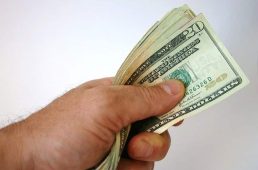What is a Sunk Cost?
Who among us hasn’t had this thought: “I’ve already spent enough money on this, why spend more?” Decisions and choices in our daily lives often lean on expenses already incurred that are no longer relevant when making a new decision. In economics, this phenomenon is called a ‘sunk cost.’ A sunk cost is any expense that has been incurred—such as money, time, or physical labor- that cannot be recovered and is therefore no longer relevant to future decisions.
For example: A company invests 10 million shekels in developing a new product and the venture turns out to be unprofitable. The desired decision would be to stop funding the venture and internalize the lessons learned. However, in reality, the situation is often different.
Sunk Cost in Political Context
This economic thinking and error can also be identified in situations not involving money. George Ball, an American diplomat, understood early on the implications of American military intervention in Vietnam. In a memo to President Lyndon Johnson in 1965, Ball warned that the U.S. military was not prepared for war in Vietnam. Ball added that since the beginning of military operations in Vietnam, U.S. forces had suffered heavy casualties that led to a feedback loop of increasing troop deployments in response, which led to more casualties—all to avoid acknowledging defeat. Ball called on President Johnson to withdraw U.S. forces from Vietnam because, in his view, national humiliation was preferable to a long military campaign that he believed would not be won. The start of military operations and the initial deployment of U.S. forces parallels an initial investment that cannot be recovered. Justifying the continuation of the operation as an attempt to salvage the initial failed attack parallels futile attempts to save the initial investment. The Vietnam War lasted twenty years and claimed 55,000 American casualties and more than 2 million Vietnamese deaths.
Sunk Cost in International Projects – “Even the Giants Make Mistakes”
On January 21, 1976, the first supersonic commercial flight took off from Heathrow Airport in London aboard the Concorde. The aircraft was intended to bring cutting-edge aviation technology to the masses, or at least to the wealthy among them (a round-trip ticket cost at least 5 times more than a comparable ticket on a Boeing 747). In November 2003, after several crashes that claimed the lives of hundreds of passengers, the decision was made to ground the Concorde permanently. Contrary to popular belief, technical failures were a catalyst, not the main reason for the decision to ground the aircraft. The root of the problem with the project was flawed business planning. Several aspects that even today represent a dead end in the context of developing new supersonic passenger aircraft were not taken into account at all when the first draft of the Concorde was proposed in the mid-1950s, nor during the maiden flight in 1976.
Damage to property caused by the Concorde’s sonic boom led to public protests against supersonic flights over populated areas—protests that succeeded in restricting the Concorde to flights over the sea. The implication of a ban on flying over land is exclusion from a huge profitable market of domestic continental flights. Joining the ordinary citizen who complained about broken windows courtesy of the sonic boom was the scientific community. The Concorde, which flew at a higher altitude than other passenger aircraft, caused more serious damage to the ozone layer. These problems joined other issues that were not addressed during project planning. To design an aircraft that could withstand supersonic flight conditions, it had to be narrow and long—meaning the aircraft could accommodate a relatively small number of passengers. The low passenger capacity (120 compared to 416 on a Boeing 747), high demand, and the need for dedicated crew training for the aircraft caused ticket prices to rise by hundreds of percentage points more than comparable tickets on jet aircraft. Another disadvantage not factored into the business model was the aircraft’s high fuel consumption. Fluctuations in fuel prices affected ticket prices more than other aircraft. Moreover, to justify ticket costs and guarantee its prestige, Air France stationed a Concorde aircraft at the New York airport that sat on the ground solely as backup in case of a malfunction in one of the aircraft. Short-term thinking and a fundamentally flawed business plan did not prevent decision-makers from being dazzled by the aura created around the Concorde and allowed a failing business to accumulate losses for 27 years. Of course, with the benefit of hindsight, it’s easier for us to judge actions taken in the past. However, the Concorde project, in its scale, can serve as a parable for situations in life where we pay in money, time, work, or any other currency solely to justify an initial expense that turned out to be lost.
Sunk Cost in Practical Context
Sunk cost is not the exclusive domain of prime ministers and CEOs of international corporations. The source of this error lies in the behavioral mechanism by which people make choices at the basic level, which is also expressed in decisions made in daily life.
A classic example illustrating the implications of not recognizing a decision as a sunk cost is the ‘concert scenario.’ Suppose, you purchased a ticket for 150 shekels to a concert by your favorite artist. On the morning of the concert, you wake up sick and are faced with two options: go to the concert or stay home and recover. If you chose to go to the concert despite the illness only because “I already paid 150 shekels for the ticket…” then you may not enjoy the concert at all. In such a case, the cost of the concert (not necessarily in monetary terms) is greater than the benefit you’ll receive from it. Therefore, if the concert won’t give you enjoyment and the only reason to go is the non-refundable expense of 150 shekels, it’s more correct to acknowledge the financial loss and focus on recovery. The danger of the sunk cost bias is giving priority to external factors when making a decision solely because of the sense of commitment created at the time of the initial investment.
A situation many encounter at times is when we’ve purchased a car, and soon after, one problem after another begins with the car, with the cost of repairs accumulating to a significant amount. When the car starts breaking down, the thought arises that perhaps it’s better to replace it because its purchase cost a large sum of money and repair costs are being added to that sum. In fact, the cost of purchasing the car is a sunk cost, and the correct way to make a decision in such a case is an in-depth calculation of current and future expected repair costs, while obtaining opinions from several mechanics, versus the cost of buying a new car.
The sunk cost bias is a behavioral flaw frequently exploited in marketing strategies. In the United States, some shopping centers are deliberately built far from residential areas to cause visitors to purchase products they don’t need based on ‘sunk cost.’ Families invest time and effort to reach those distant shopping centers (= a non-refundable expense) and tend to spend more than they planned with excuses like: “We drove so far, so shouldn’t we buy something?” The appropriate way of thinking in such a case is: “We drove far, we bought what we needed, we don’t really need to buy anything else, it’s time to go home.” Even thinking along the lines of: “We didn’t find anything to buy, we made a mistake, we learned a lesson and won’t repeat the mistake in the future” is preferable to wasteful consumption. The harmful habits ingrained in us are strong, but they can still be changed if we shine a spotlight on them and become aware of them.
As demonstrated, profit models in marketing companies are based on behavioral biases and irrationalities in people. The sunk cost bias evokes a sense of commitment to the investment. This is one of the reasons many businesses offer services on a subscription or prepayment basis. Annual subscriptions to newspapers and magazines are usually offered for the long term to evoke that sense of commitment that blinds our true desires, thereby motivating us to waste money on something we may have no interest in at all. Avoiding sunk cost doesn’t mean we should shy away from commitment. In many cases, commitment is good for us—investment in physical training, healthy nutrition, relationships, craftsmanship, work, and so on. Awareness of the flaw allows us to understand what we truly want, so we can make decisions in the future that are right for us.
Behavioral biases will always exist, but restraining consumer behavior stemming from impulse, as well as awareness of the behavioral flaw and its causes, will increase thoughtful thinking over impulsive thinking and reduce erroneous economic decisions. Working on changing habits requires great effort, but remember that habits, as ingrained as they may be, can be changed. Correct economic behavior is achievable. It’s even rational to think so, and not just as a slogan.



